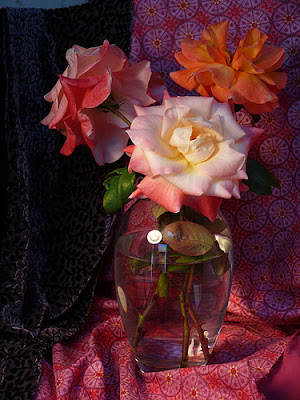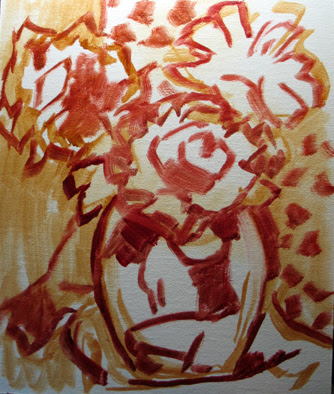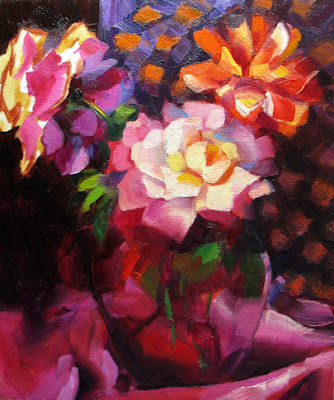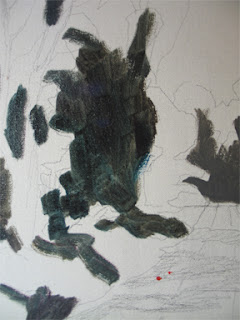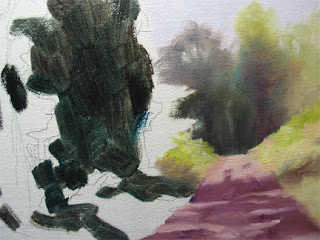

Chroma Atelier Interactive Acrylics.
I have been shopping for acrylics, in anticipation of a mural I will be working on ( on four walls) in January, and decided to try the Interactives. These acrylics are advertised as being the most like watercolors, used very thin, and oils, very blendable. It sounded like the best of both worlds. So I got them yesterday, and after finishing and posting my painting for today AND cleaning my brushes, I got them out to play. The colors are strong and clean. The color chart was done on really poor watercolor paper, and I will try them on some decent paper, but I think they'll be
fairly like watercolors. On this paper, thinned with a lot of water, they acted like watercolor, but lost their strength. Used more thickly, they felt a little "slimey" to me. I'll let you know what I think with better paper. I tried some wet on wet, and the colors will run together, but since it's a different medium, it really won't act exactly like watercolor.
On to a painting, using them like oils.
There are a lot of different mediums to use with this paint. The full line can be found on the web site, here:
http://www.chromaonline.com/chroma/I think once I play with them, and figure out what they do, I'll be able to do some blending. I could only blend when the paints were truly fresh, and was shy about using too much of any of the mediums. I did pop a little of the "Slow" into my blue mixes for the water, and that helped, but I probably didn't add enough, because I found it tricky. The painting is below.
I'm excited about the new paint, and have enjoyed it so far. Taking into account that this is my first play time with them, I am pleased with the results. I'll keep you posted.
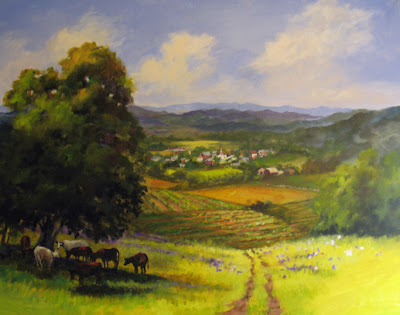
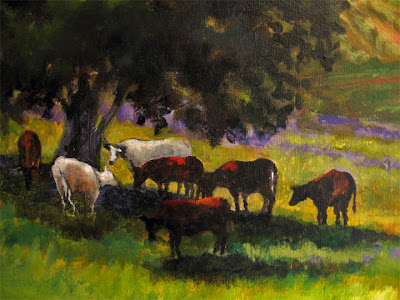
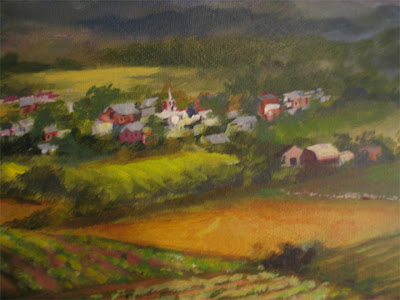 Valley with Cows, and Details.
Valley with Cows, and Details.














 It gives a very fine line, nice for hatching, but with a little pressure, you can also get a stronger line, and with pressure you can vary them in the same line. You can, of course, change the nib out any time. I know you can get these nibs in most fine art stores, or order various separtae nibs from Ackerman's. I tried writing with it, and that works just fine.
It gives a very fine line, nice for hatching, but with a little pressure, you can also get a stronger line, and with pressure you can vary them in the same line. You can, of course, change the nib out any time. I know you can get these nibs in most fine art stores, or order various separtae nibs from Ackerman's. I tried writing with it, and that works just fine.


